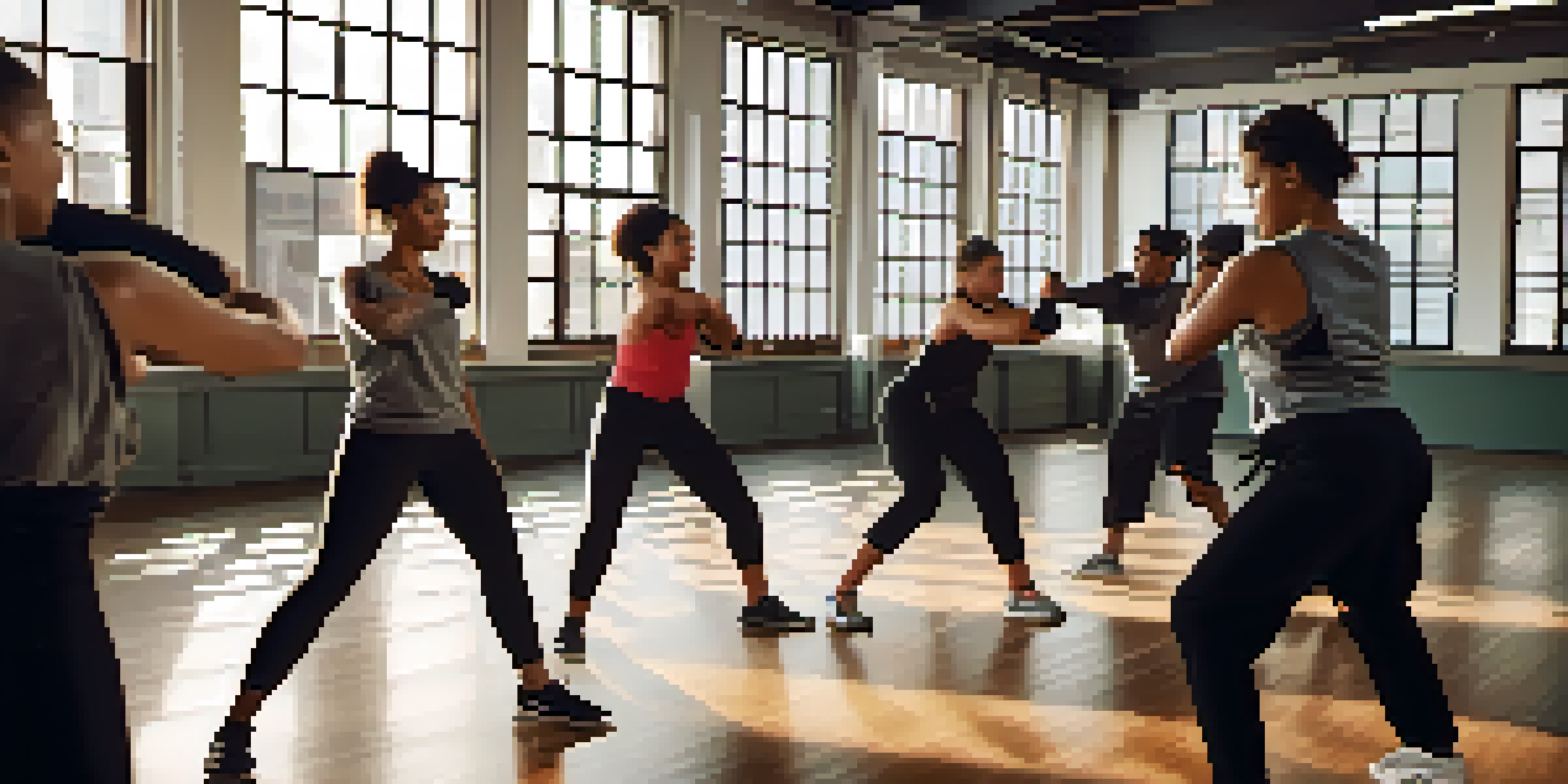The Role of Gender in Self Defense Risk Assessment

Introduction to Gender and Self Defense
Self-defense is a critical skill that everyone should consider, but gender can significantly influence how individuals perceive and assess risk in self-defense situations. For instance, societal norms often shape the way men and women are taught to respond to threats. This introduction sets the stage for understanding the complex interplay between gender and self-defense risk assessment.
Self-defense is not just about physical strength; it’s about understanding one’s vulnerabilities and being prepared to respond effectively.
Women, for example, may face different threats compared to men, which can affect their self-defense strategies. Additionally, the way that society views aggression and vulnerability often leads to different training and preparedness levels between genders. Understanding these differences is essential for tailoring self-defense programs that are effective and relevant to all individuals.
By exploring gender roles in self-defense, we can create more inclusive and effective approaches to personal safety. Recognizing that everyone experiences risk differently can empower individuals to be better prepared for potential threats. This article will delve deeper into how gender shapes our understanding and approach to self-defense.
Perceptions of Threat: Gender Differences
Research shows that men and women often perceive threats differently, influenced by societal expectations and personal experiences. For example, men might be more likely to confront potential threats head-on, while women may assess their surroundings more cautiously. These differing perceptions can lead to variations in how each gender prepares for and responds to self-defense situations.

Moreover, the types of threats faced can also differ significantly. Women are more likely to experience certain forms of violence, such as domestic abuse or harassment, which can impact their risk assessment strategies. Understanding these nuances is critical for developing targeted self-defense training that resonates with each individual's lived experiences.
Gender Shapes Self-Defense Skills
Understanding how gender influences perceptions and responses to threats is crucial for tailoring effective self-defense training.
This awareness can help individuals of all genders recognize their unique vulnerabilities and strengths. By fostering open discussions about how gender influences perception, we can create a more supportive environment for everyone. Ultimately, acknowledging these differences is the first step toward effective self-defense preparation.
Training Approaches: Tailoring for Gender
Given the distinct risks faced by different genders, self-defense training must be tailored accordingly. Programs designed specifically for women might focus on situational awareness and de-escalation techniques, while those for men might emphasize physical confrontation skills. This customization ensures that individuals are equipped with the most relevant tools for their scenarios.
The best way to predict your future is to create it.
Moreover, inclusive training environments that recognize gender differences can enhance learning and retention. Ensuring that all participants feel safe and understood encourages open dialogue and collaboration. This approach not only builds confidence but also fosters a sense of community among participants.
The goal of tailored training is to empower individuals, regardless of gender, to handle potential threats effectively. By addressing the unique experiences and concerns of each group, we can create self-defense programs that are not only effective but also resonate deeply with participants. This kind of empowerment is essential for building a culture of safety and preparedness.
The Role of Socialization in Risk Assessment
Socialization plays a significant role in shaping how different genders assess risk in self-defense situations. From a young age, societal norms often dictate how boys and girls are taught to react to potential dangers. For example, boys might be encouraged to assert themselves, while girls may be taught to be more cautious and avoid confrontation.
These early lessons can have lasting effects on how individuals perceive and respond to threats as adults. A man may feel pressure to demonstrate physical strength, while a woman might rely more on verbal skills to navigate conflicts. Recognizing these socialization patterns can help individuals understand their tendencies and adjust their responses accordingly.
Cultural Context Affects Risk Assessment
Cultural backgrounds play a significant role in shaping self-defense practices and perceptions of risk across different genders.
By examining the impact of socialization, we can identify areas for growth and improvement in self-defense training. This understanding can lead to more effective strategies that account for the diverse experiences of all genders. Ultimately, addressing socialization helps to empower individuals to take control of their safety.
Cultural Influences on Self Defense Perceptions
Cultural background significantly influences how gender shapes self-defense perceptions and practices. In some cultures, traditional gender roles might reinforce specific behaviors, such as encouraging men to be protectors and women to be caregivers. These cultural narratives can impact how individuals assess risk and choose to respond to threats.
For instance, in cultures where aggression is celebrated, men may feel compelled to confront threats physically. Conversely, in cultures that emphasize community and dialogue, individuals may prioritize conflict resolution over confrontation, regardless of gender. Understanding these cultural nuances can help tailor self-defense training to meet the needs of diverse groups.
By considering cultural influences, self-defense programs can foster inclusivity and respect for individual backgrounds. This acknowledgment not only empowers participants but also enriches the training experience. Ultimately, culturally informed approaches can lead to more effective and relatable self-defense strategies.
Psychological Factors in Risk Assessment
Psychological factors also play a crucial role in how gender influences self-defense risk assessment. Anxiety levels, confidence, and past experiences can all affect an individual's ability to accurately assess threats. For instance, women might experience heightened anxiety in certain situations, which can cloud their judgment and response time.
Men, on the other hand, may struggle with societal pressures that dictate how they should react, potentially leading to overconfidence. This overconfidence can result in underestimating risks or misjudging situations, which can be dangerous. Understanding these psychological dynamics is essential for developing effective self-defense training.
Psychological Factors Impact Readiness
Anxiety, confidence, and societal pressures can affect individuals' ability to assess threats, highlighting the need for psychological support in self-defense training.
By addressing psychological factors, self-defense programs can help individuals build confidence and learn to manage anxiety. This holistic approach not only improves risk assessment but also prepares participants to react appropriately in high-pressure situations. Ultimately, empowering individuals psychologically is just as important as teaching physical techniques.
Conclusion: Embracing Diversity in Self Defense
In conclusion, understanding the role of gender in self-defense risk assessment is essential for creating effective training programs. By recognizing the unique experiences and challenges faced by different genders, we can tailor self-defense strategies that resonate with everyone. Embracing diversity not only enhances the learning experience but also fosters a sense of community and support.
As we continue to explore and discuss these important topics, we can create safer environments for all individuals. Encouraging open dialogue about gender dynamics in self-defense is crucial for breaking down barriers and building trust. This collaborative approach empowers everyone to take charge of their personal safety.

Ultimately, the goal is to create a culture of awareness, preparedness, and empowerment. By acknowledging the role of gender in self-defense, we can ensure that all individuals are equipped to handle potential threats effectively. Together, we can work towards a safer future for everyone.